If you could choose a location for a Himalaya base camp, would you prefer a monastery or a distillery? This was most decidedly not Scotland, but we got our distillery all the same….
In a recent Macfilos post we visited the Rongbuk Monastery, the base camp location for the 1924 British Everest expedition, situated to the north of the peak. However, for the trekking adventures of a group of nine westerners on the eastern side of Everest just three months ago, we unexpectedly found our base camp to be at a distillery.
Last village on the way in
But before we get to our base camp it’s worthwhile to mention the last village heading in to the Everest region. It is the small town of Pheruche. It is where the road from the north forks; one way takes you to the Rhongbuk Valley and monastery, while the other heads due south towards our destination, the Kharta Valley, about an hour further on.
Pheruche has changed in recent years. Previously it was the trekkers’ and climbers’ provisioning depot but, with the better roads and construction work heading further in, it has become a short stopover as people continue in on the improving roads. We stopped there for lunch both on the way in towards Kharta and again, ten days later, as we came out and took the other road back in to the Rhongbuk Valley and the North-West Face of Everest.
Changes happen
For our nine-day trek we were to be based at Yuba (3650m), previously at the end of the road towards the eastern side of the Everest. It’s a location that was visited by the British Expeditionary Group of 1921, when they were exploring routes in towards the North Face. They noted that the area had the advantage of being forested, and therefore provided a ready source of firewood. And the wild rhododendrons indicated a slightly milder climate than the higher Rongbuk Monastery region a few miles away.
It is this area which is now a trekking region on the Tibetan side of the mountain. We were fortunate to be there. Very few trekkers get permits to be allowed into the region, minuscule numbers compared to the popular trekking routes in Nepal on the other side of the mountain.
Tibet is rapidly changing. The road now extends well down into the Kharta Valley, further towards the mountain and the adjacent Kharta glacier. It will soon become a main road for tourism, still gravel at this stage, but well engineered and being built deep into the valley. That didn’t matter to us, as we were planning to trek into a wild region off to one side, towards the three-mile high Kangshung face of Everest. But first, it was a matter of getting set up at base camp.
The sign at the gate of the compound surprised as we arrived. It was a new sign for the changed business within the walls. The old sign had come down and was lying inside the gate.
Our main game at base camp
For us trekkers and our staff, base camp was the place where we had to repack our bags, deciding on the lightweight kit items that could be carried efficiently by us and our yaks. All other travel clothes and bags were to be put into storage until our return after nine days. We got to know our tents, were introduced to the yaks and the yak-men who would transport our gear, and became aware that our cook was going to be a great meals provider over the next week or so.
Main business at base camp
We spent two days at our base camp. One day to ready ourselves for the trekking adventure to follow, and one day upon return. Our location was at one end of the compound. At the other end, the few rooms previously used for travellers accommodation had been converted into the distillery business, now the main game at the location. The Kharta Valley is a highland region where barley is a staple crop for the villagers. Some of that barley is fermented and then distilled to produce commercial barley spirit. There’s no evidence of charcoal or oak enhancements in the production of the whiskey, just distil it and collect the magic liquid.
A few of us crazy foreigners with cameras were able to visit the commercial operation to see it in operation. It was organised by Tashi, our very kind and knowledgeable Chinese Tibetan guide who also acted as translator for us. What we saw was a basic but effective operation. There were a few village ladies working inside using very simple but effective distillation devices, obviously expert in the process, the temperatures and condensation of the spirit. They even opened a drum of warm pure spirit and invited us to inhale. Wow, powerful stuff, warm rocket fuel!
The old accommodation rooms are now used for the business. Our guide Tashi .explained the distillation process to trekker Tony The expert head lady in charge knew exactly what she was doing The distilling room had two sides devoted to built in concrete benches with multiple pot stills….. …….each individually heated by fires located in fireplaces fuelled outside the building
The people
The families who work at the community-owned business were kind and smiling, gently going about their work with a minimum of fuss. They didn’t mind western trekkers being at the far end of the facility. Other women were working inside, some taking care of infant children. Outside, a man was tending a large and ornate still.
Ladies looking on inside the distillation room Outside, one of the men was also distilling with a serious piece of kit And the next generation was learning the business, with our base camp in the background. Across the yard previous accommodation rooms 1 and 2 were now used for storage of fermentation and distillation supplies
A special photograph
While we were catching images inside the distillation room I noticed trek colleague Martin Plackett from London checking the back of his camera. He had just caught an image of two children, lit by the side window in the smoky room. It captured a special moment with the people in that small room.
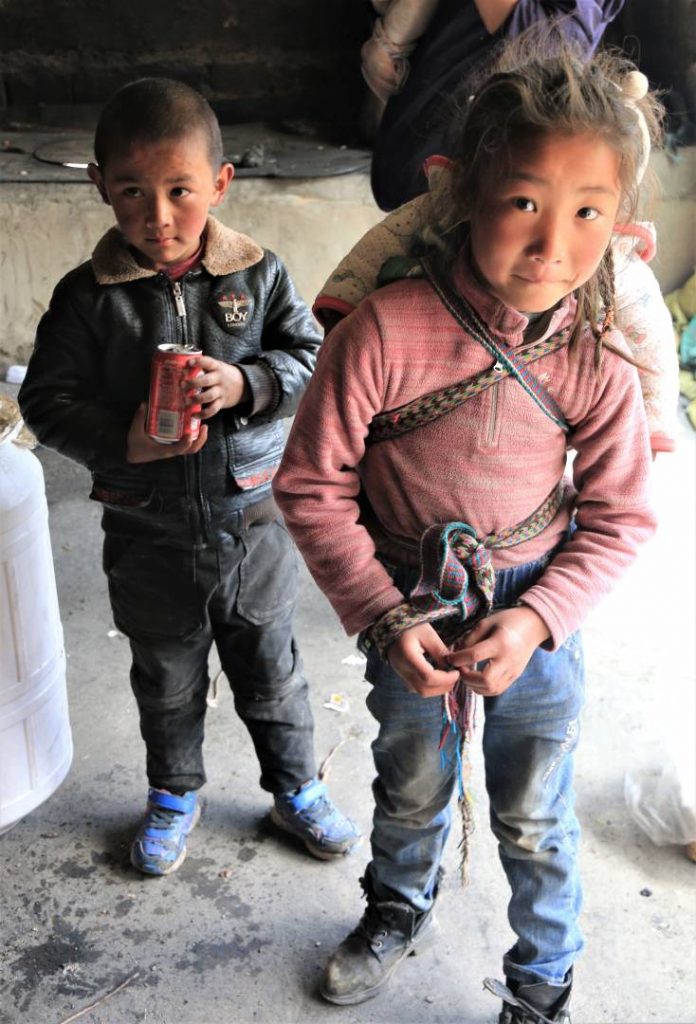
Challenging images
My images were taken with a little Leica C Typ 112. A small 1/1.8 sensor hand held in a dimly lit room should not perform all that well, but I thought I’d see what the photo gods would provide. Even more challenging, I realised afterwards that I had been using it on a fixed 80 ISO setting, rather than letting auto ISO ramp up the speed. Silly me, how could that have happened? When did I accidentally change from auto ISO to fixed 80 ISO? Was it me, or was it someone else who had admiringly played with the camera just previously? Memo to self: only let your own klutzy fingers touch buttons on your camera.
I chose to shoot jpeg, so I was concerned that I might not be able to recover enough out of the seriously dark images that resulted. However, upon returning home, I was able to achieve maximum recovery using Windows 10. Except for Martin’s image of the children, the distillery shots that accompany this article were all recovered from dark nondescript shadows that I brought home. Not perfect by any means, but enough to provide some memories of a special place at the start and end of an adventure. Phew!
After the distillery visit I lay down in my tent as the regular 4pm storm of frozen sleet wheeled in. It was there that I realised that the Leica C had been labouring at 80 ISO. In the dark smoky room I had noticed that the screen was quite dim, but assumed that the in-camera processing would take care of it. Not thinking, me. Nothing to do but reset to auto ISO and shoot off one image of the inside roof of my tent – too darn cold to go outside in the storm.












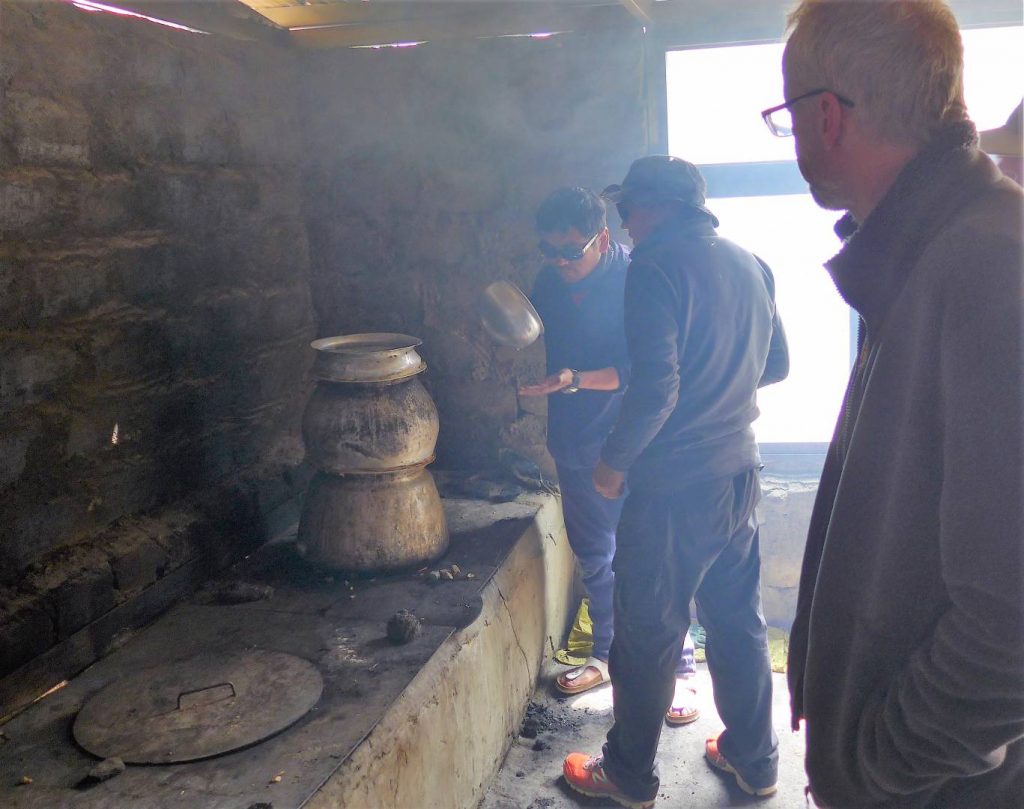
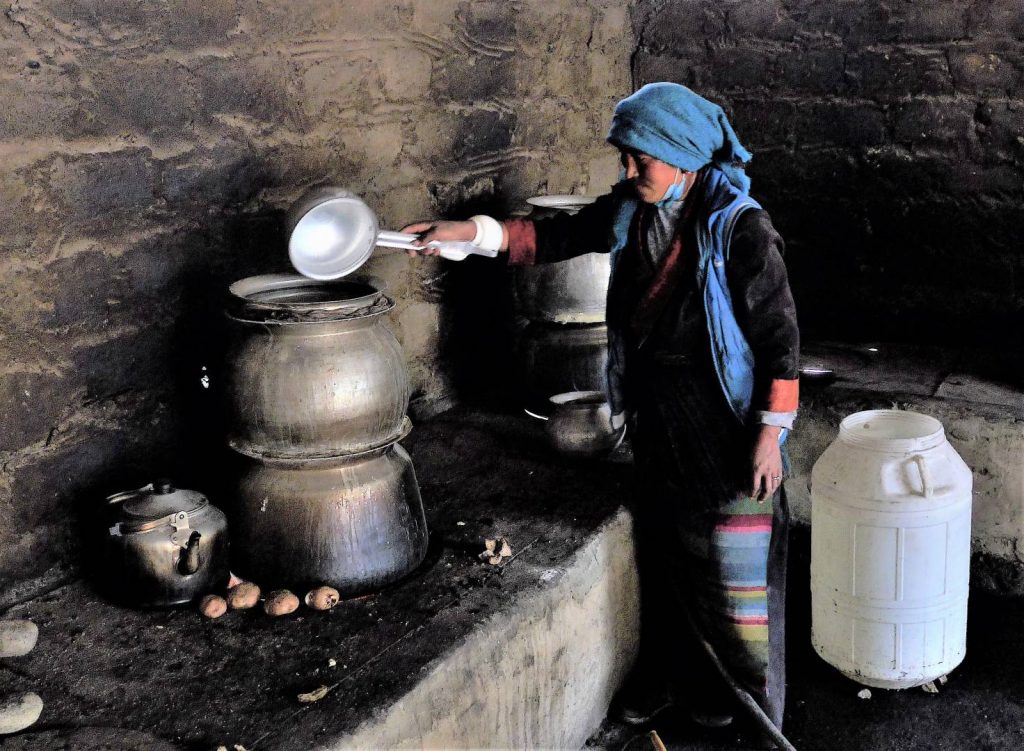
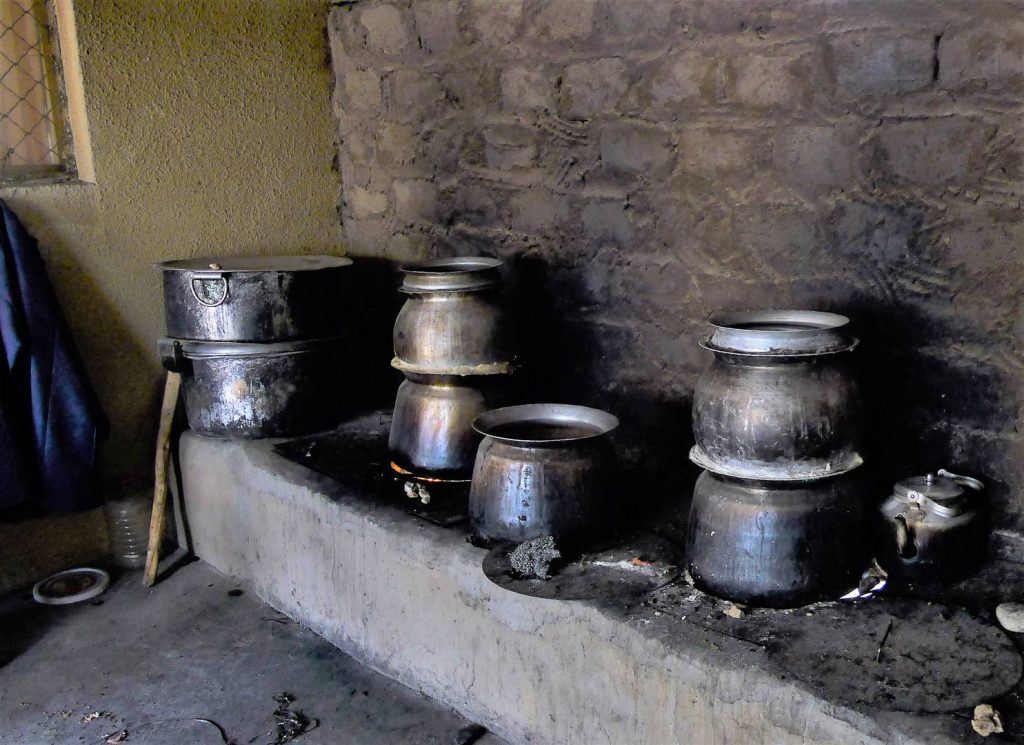
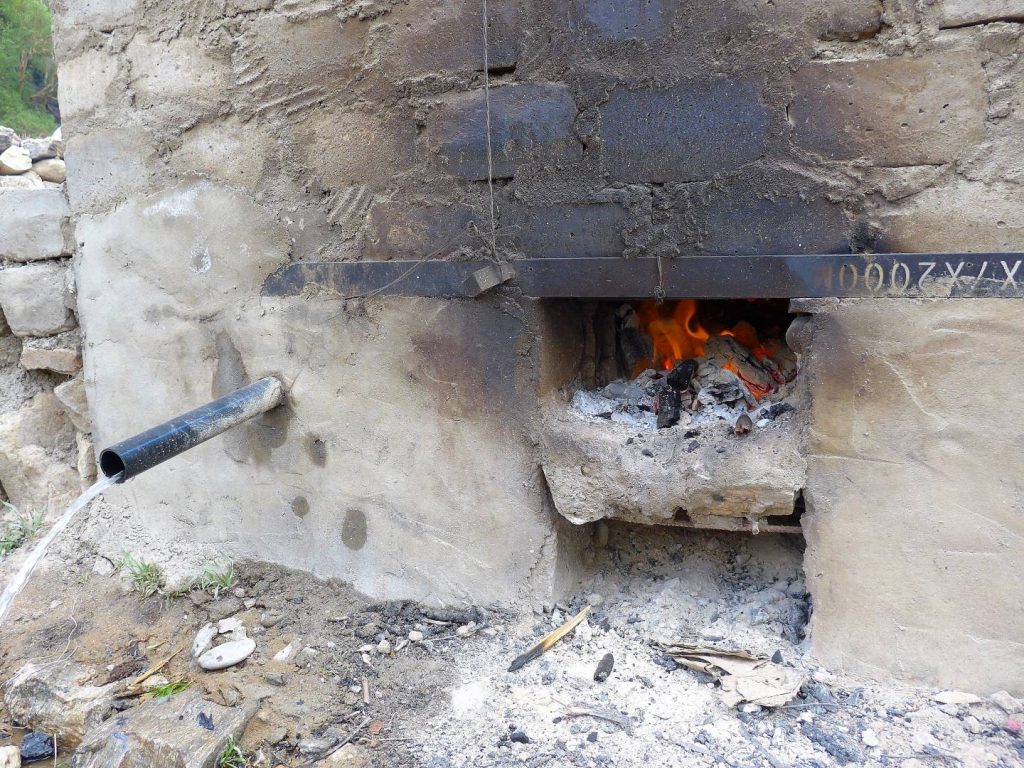




Just back with a no internet world to discover the article. You make that little Leica shine. The images of the children and houses remind me of Bhutan. I’m sure the local whisky helped you cope with the altitude. Small cameras are always my first choice when hiking or mountaineering. Thanks for sharing Wayne.
Jean
Hello Jean. China Tibet, Nepal, and Bhutan are indeed a special part of the world. Unlike you, I haven’t been to Bhutan (yet!). But will add it to the list to complete the trifecta – will need management approval though!
I’m sure you had your Ricoh or Leica X2 with you while you were out of contact with the internet.
Thanks for thoughtful wonderings Kevin. Glad you enjoyed the writeup.
Didn’t try to buy any. We stay off strong alcohol at altitude.
But the fumes when smelling the warm spirit in the plastic drum certainly cleared sinuses in a big way. Wow!
Would definitely be bottled and sold somewhere. We didn’t see the bottling plant, just the distillation and collection process. The same the world over, just done rather differently where we were.
Thanks Wayne for telling and illustrating this story so nicely. So many unanswered questions though. Were you able to buy some? Did they bottle it? Who did they sell it to? Perhaps one day I’ll visit and answer these myself. Looking forward to your next articles. The small camera sounds like a good choice on a stiff trek.
Lovely photos, Wayne. Where I come, from ‘deoch an dorais’ means literally ‘a drink for the door’ which was, generally, a quick stiff whiskey at the end of a night’s drinking as the drinker made his way home on a cold winter’s night. In the Himalayas, there would appear to be good cause for such practices.
As for the still, there were many such stills (still some around) in my country, all of them illegal making the clear potent spirit we call poitin (pronounced poteen). I am sure that in the Himalayas Revenue inspectors are not exactly thick on the ground.
Finally, does the little girl in the second last photo actually have a baby on her back? She looks remarkably young to be entrusted with such a task.
William
William. Wayne and I did check “wee deoch an doris” as you can imagine. That’s Scots Gaelic and interesting to see it’s nearly the same in your language. We knew you’d be on our case.
Hello William. Thank you for astute information and insight.
And yes, very well spotted, she does have her youngest sister on her back!
I am jealous of your trip. The last time I climbed a mountain was Glittertind in the 70s. An amazing experience. With my asthma and age hiking is now a challenge. It is important not to put off these experiences or they will be lost. I feel photography is the same-get out with a camera and experience now or it will be lost.
Loved your images and story!
Yes Brian, total agreement with both of your observations.
I realized that if I din’t go the the Chinese Tibetan side of Everest I could find myself unable to do it later. And I couldn’t bear that thought.
And your comment to just get out there with a camera has struck a chord about something that I did a week ago. I might even spend an hour putting something together for Michael/Macfilos tomorrow. Will credit you with the germ of an idea…..
I am with John above Wayne – you left a distillery – was the 4pm lay down (in an alleged daily storm) really an excuse to snooze off a glass or two, too many while sniffing the distillers apron.
I am looking forward to seeing what you got up to next. And I agree, the sidelit image is special. Those are the moments we all hope to capture on the trip of a lifetime.
Hi Dave. I can assure you it wasn’t an alleged storm. The freezing sleet was real, and the sound of the wind and ice on the orange nylon outer tent was unique. The last photo was looking up at the colourful innner tent just a metre above. Why the sewn-in nylon colour? Dunno, just was.
Great article, thank you for sharing your experience. To echo what was said above, I enjoyed the descriptions of the early Twentieth Century expeditions to give a sense of mountaineering history of the place.
Thanks Steve. yes it’s great to stand at those locations of history a hundred years ago, and realize that the landscape has hardly changed in that time. To look and see it as they saw it is special.
Still don’t understand you voluntarily left a distillery? Love the pics and article, where NXT somewhere sunny squash grapes with your feet and enjoy your labors?
Your comment has me smiling John. It was upon return from recent travels a few weeks ago (to be revealed to Macfilos in the future) that my wife announced “I don’t want our next trip to be adventure travel again, I’d like just one trip of a relaxing style”.
Cannot compute…..cannot compute…..cannot compute !!
A great read, Wayne, with some engaging images of interesting subjects. I also liked your sense of history and links to the British expeditions of 1921 and 1924. Glad to see your group had decided against wearing the Harris Tweed jackets of earlier mountaineers .
A Harris Tweed jacket would have been quite acceptable, David. But the hobnailed boots would have been a worry 😉
that little leica c with its little 1/1.8 crop sensor is a gem
i keep it always on ISO 80 and for underexposed images (night images etc) i fix in post.
the camera ‘outperforms’ it’s size
i have taken it on holiday throughout Europe – last week i returned from Paris with it and it will give me images that i can (and have in the past) enlarged to 20″ x 16″ and a few larger
Yes Paul, the little Leica C isn’t the latest and greatest, but it is a wonderful ultra lightweight travel camera.
I’m assuming you shoot RAW, I didn’t but should have – it was hard work retrieving images from out of the near darkness, and on a couple of them I did end up with rather strange hues. RAW would have served me better. Live and learn is my lesson..